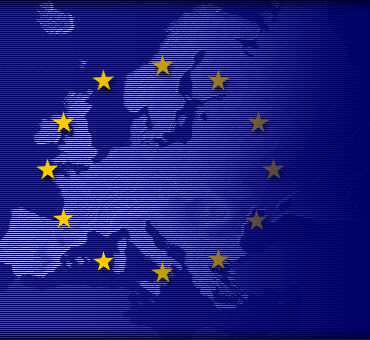
EU Sponsors P2P TV with 14m Euros: NewTeeVee
The European Union has taken initial steps toward establishing a continent-wide peer-to-peer television (P2PTV) protocol for delivering rich multimedia via broadband. An exciting opportunity exists for the EU to emerge as the pioneering force for entrepreneurial activity in the P2PTV market, which offers many exciting possibilities for innovative media strategies to redefine online video. Known as P2P-Next, the project homepage makes as clear an argument as I have yet found for the importance of finding useful applications of P2P technology, rather than take the suppressive approach that many in the US and Japan have adopted.
The EU is internally divided however, with some states taking equally aggressive stances against peer-driven protocols as those assumed by their American and Japanese counterparts, who have recently considered allowing ISPs to block P2P traffic. Pressure from powerful interests, such as the music industry, have led to institutional mistrust of P2P technology generally following the well documented file-sharing networks, such as Kazaa and Morpheus, which have utilized P2P to pirate music and movies for over a decade.
(From the P2P-Next Introduction) The P2P-Next integrated project will build a next generation peer-to-peer content delivery platform, to be designed, developed and applied jointly by a consortium consisting of high profile academic and industrial players with proven track records in innovation and commercial success. The current infrastructure of the Internet is not suited to simultaneous transmission of live events to millions of people (i.e. broadcasting). The problem is that a dedicated stream of data must be sent to every single user.
With millions of potential users, the simultaneous streams of data will easily congest the Internet. For several years, we have been told that the answer to this problem is "multicasting", whereby the data stream is distributed to many local servers that subsequently "re-broadcast" the content to local users. However, most IP routers of the Internet cannot support multicasting–and there seems to be no financial incentive for the ISPs to introduce multicasting. Also, the use of Audiovisual Media is moving from a collective and passive approach to personal active behavior, at home and in mobile situations outside the home. At the same time use patterns are shifting towards non-linear usages, moving away from the classic model of linear broadcast TV. The TV set no longer has the monopoly of delivery of audiovisual content; the PC and related media centers, mobile phones, and potentially initiatives from new stakeholders are all becoming increasingly important.
In such heterogeneous environments, efficient content delivery needs optimized unicast, multicast, broadcast, and also support for new mechanisms that have been made possible by the recent advances in P2P grids. This situation has important consequences for the existing business models and institutions, as well as for content production, content distribution, and end user experience on various terminals. This particular holds for stakeholders that propose services based on heterogeneous terminals and networks, together with the demand from users of transparent service continuity. This makes Peer-to-Peer -based technologies that can provide efficient and low-cost delivery of professional and user created content essential for the technologically-competitive future Europe.
In response to these challenges, the objective of P2P-Next is to move forward the technical enablers to facilitate new business scenarios for the complete value chain in the content domain from a linear unidirectional push mode to a user centric, time and place independent platform paradigm. A platform approach allows modular development and modular applications, enables knowledge sharing and facilitates technology integration, code- and skill re-use. This translates to fast development of new content delivery applications that build value for service and content providers. P2P-Next will develop a platform that takes open source development, open standards, and future proof iterative integration as key design principles.
A lofty goal for certain, but will the EU accomplish its mission if the rest of the western world is going to every extent imaginable to suppress all P2P network transmissions? There is some indication from Comcast, the primary target of P2P obstruction allegation in the US, that the company has come to see the merit in the legal application of P2P distribution on the 21st century Internet.